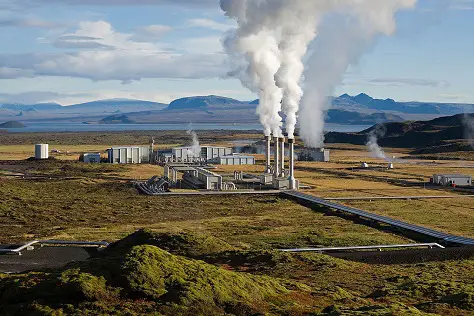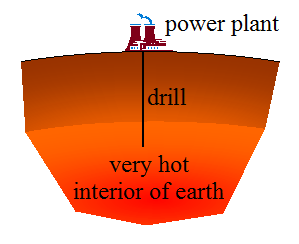About me and why I created this physics website.
Geothermal Energy - For Kids

Nesjavellir Geothermal Power Station in Iceland. Source: http://en.wikipedia.org/wiki/Geothermal_energy. Author: Gretar Ívarsson, geologist at Nesjavellir
Geothermal energy is the heat energy inside the earth's interior. Most of this heat energy comes from radioactive decay processes within the earth's interior. The remaining heat energy comes from heat that was trapped inside the earth's interior when the earth was formed about 4.6 billion years ago.
The easiest way to access this heat is with "vents" close to the surface of the earth. These vents serve as "hot spots" in which the heat inside the earth has entered into natural cavities which are only a few miles (or much less) below the earth's surface. Few places on earth have this natural geographic advantage. Iceland is one of those places. It has abundant geothermal energy resources.
The geothermal heat in Iceland is used to heat the water used in homes and buildings. This means that hot water tanks in homes and buildings are not needed as a result. This heat is also used to heat the inside of homes and buildings when the weather is cold.
This heat can also be used to heat water and produce high-pressure steam for running large turbines in power generating plants. These large turbines generate the electricity used in homes and buildings. The temperature required to produce this high-pressure steam needs to be several hundred degrees Celsius. However, the temperature inside the earth is more than enough to satisfy this temperature requirement. If you go deep enough inside the earth the temperature is thousands of degrees! The figure below gives you a visual idea of how geothermal power generation works.

Even though the heat energy inside the earth is more than enough to supply all of our energy needs on earth, the main drawback is that you normally have to drill a hole many miles deep into the earth in order to access this heat from the surface. Right now this represents a technological challenge we can't yet overcome. So unless the heat is naturally close enough to the earth's surface, such as in Iceland and other volcanically rich areas, it is too difficult and expensive to make drilling worthwhile.
Return to Physics For Kids page
Return to Real World Physics Problems home page